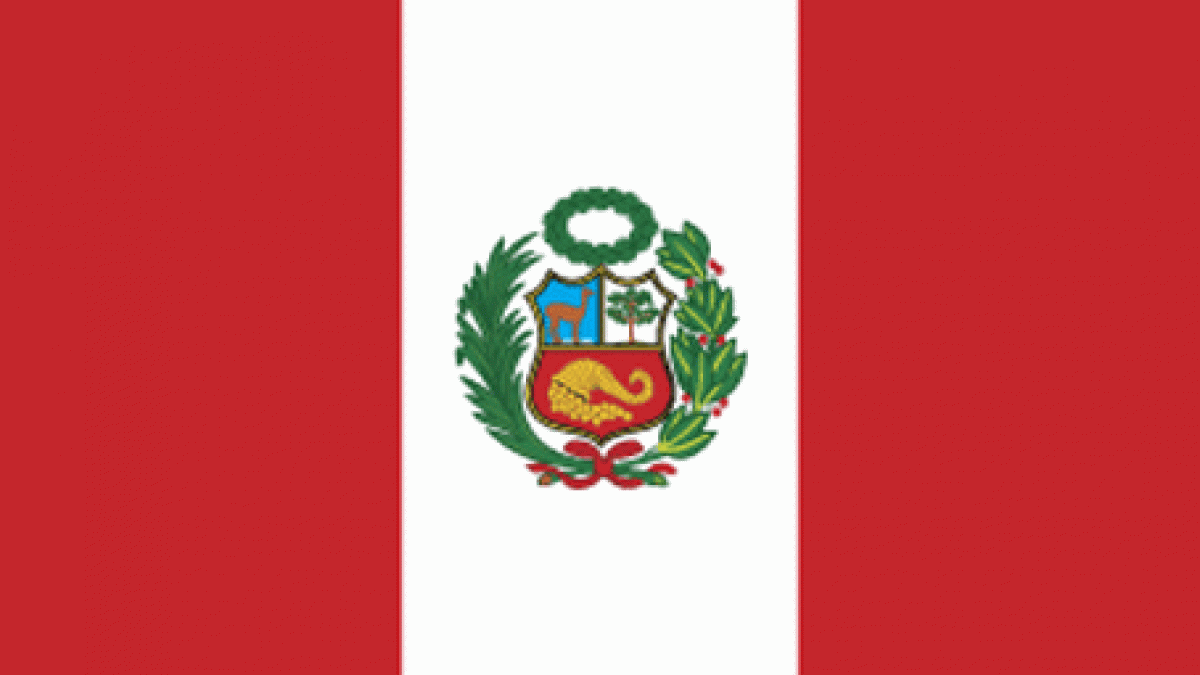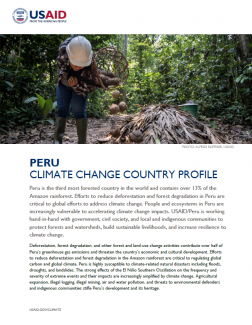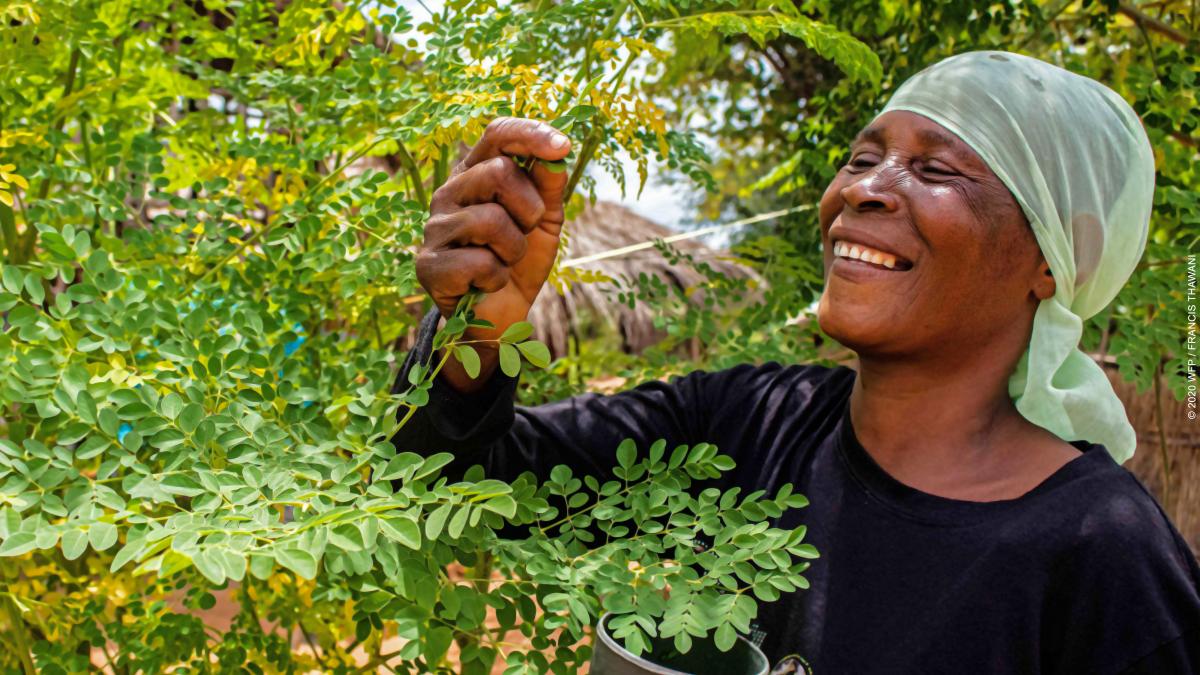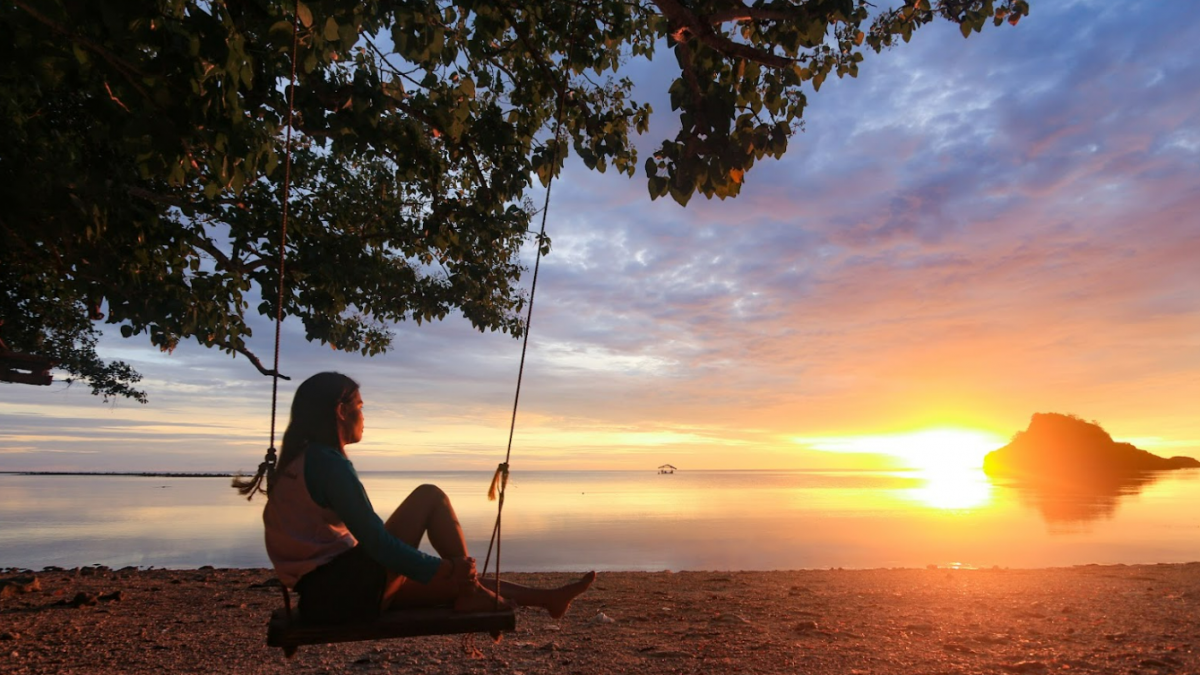FACT SHEET – Peru is the third most forested country in the world and contains over 13 percent of the Amazon rainforest. Efforts to reduce deforestation and forest degradation in Peru are critical to global efforts to address climate change. People and ecosystems in Peru are increasingly vulnerable to accelerating climate change impacts. USAID/Peru is working hand-in-hand with government, civil society, and local and indigenous communities to protect forests and watersheds, build sustainable livelihoods, and increase resilience to climate change.
Deforestation, forest degradation, and other forest and land-use change activities contribute over half of Peru’s greenhouse gas emissions and threaten the country’s economic and cultural development. Efforts to reduce deforestation and forest degradation in the Amazon rainforest are critical to regulating global carbon and global climate. Peru is highly susceptible to climate-related natural disasters including floods, droughts, and landslides. The strong effects of the El Niño Southern Oscillation on the frequency and severity of extreme events and their impacts are increasingly amplified by climate change. Agricultural expansion, illegal logging, illegal mining, air and water pollution, and threats to environmental defenders and indigenous communities stifle Peru’s development and its heritage.
Government of Peru Climate Priorities
The Government of Peru (GoP), in part through its Nationally Determined Contribution (NDC) to the United Nations Framework Convention on Climate Change (UNFCC), has set ambitious targets to reduce greenhouse gas (GHG) emissions and increase the country’s resilience to climate change economy-wide. Key mitigation and adaptation goals include:
- Limit GHG emissions by 30–40 percent by 2030 and become net carbon neutral by 2050.
- Implement 90 adaptation measures across critical sectors including Water, Health, Fishing and Aquaculture, Agriculture, and Forests.
- Develop a participatory Climate Change Strategy Towards 2050.
USAID’S Climate Change Program: Objectives and Results
Development Objectives of USAID/Peru are based in climate action and contribute to the Mission’s goals to increase climate resilience, empower marginalized populations to address climate change, and strengthen climate-smart agriculture.
Under this framework, USAID works with government, civil society, and Indigenous peoples in Peru and the Amazon basin to improve natural resources management and governance, and sustainable production. Currently, USAID supports the GoP’s climate priorities through programs and partnerships designed to reduce deforestation and limit GHG emissions, improve natural resource governance, protect biodiversity, reduce conservation crimes, improve agricultural and other livelihoods, and strengthen water security and resilience to droughts and floods.
Adaptation
USAID’s work on adaptation within Peru focuses on improving the country’s water security, improving the resilience of agricultural value chains and food security, while advancing climate monitoring and empowering local communities, agricultural producers, and the GOP to protect and sustain water, soil, forest, and marine resources.
Key Results
- Collaborated with dozens of partners to build a portfolio of natural infrastructure for water security investments valued at $440 million, with $20 million of that portfolio mobilized and moving towards implementation as of October 2023.
- Trained more than 5,600 professionals to design, monitor, and manage natural infrastructure projects, and professionals from eight national, regional, and local institutions with improved capacity to address climate change impacts.
- Developed and disseminated 11 tools to support the scale-up of natural infrastructure projects.
- Supported Peru’s water regulator to develop and implement an Institutional Gender Equality Policy that will improve gender equity in its activities.
- Supported 34,300 farmers in San Martin, Ucayali, Pasco, Junin, Cusco and Huanuco to implement climate-smart agricultural practices including agroforestry systems, soil and water conservation, post-harvest improvements, and inorganic and organic waste management.
Key Adaptation Activities
Natural Infrastructure for Water Security (NIWS, 2017–2023)
This program supports Peruvian water managers, planners, and policymakers to use nature-based adaptation solutions, such as natural infrastructure and watershed science to respond to and reduce the impacts of flooding, drought, and decreased water availability.
SERVIR-Amazonia (2018–2023)
This joint initiative of NASA and USAID works with stakeholders in Peru and throughout the Amazon to develop state-of-the-art geospatial and satellite-based tools to improve the monitoring and management of climate change impacts, and to empower authorities to rapidly respond and improve resilience to natural disasters. Services reduce the risks from drought and flooding, predict fire danger, and model soil fertility.
Extractive Industry Transparency Initiative (EITI, 2021–2026)
Improving natural resource governance, increasing transparency, and reducing corruption is essential to increasing climate ambition in Peru. EITI facilitates cooperation among government, extractive companies, and civil society to increase citizen participation in natural resource decisions and dialogue about climate risks and assist regional and local governments to invest in natural infrastructure and resilient water resources management using royalty funds (e.g., required payments from extractive industries) in La Libertad, Ancash and Cajamarca.
Fire Management and Response in the Amazon Region
This program provides technical expertise in planning, preventing, and fighting fires to protect people and forest resources. It supports government institutions and local partners to collaboratively develop national fire management policies and supports standard firefighting courses to promote the sharing of professionals across borders. It is helping to modernize wildland fire forecasting systems to provide decision-makers with timely information to make better on-the-ground operational decisions.
Coffee Alliance for Excellence (2016–2024)
The Alliance works with 8,300 coffee farmers to implement sustainable and low emission production practices including the installation of more than 12,000 hectares of coffee under agroforestry systems, integrated pest management, regenerative agriculture, wastewater management and solar drying facilities. The activity will also incorporate traceability technology to monitor crop expansion activities and prevent deforestation.
Specialty Coffee Community (2021 - 2026)
This activity works with 3,200 certified fair trade and organic coffee farmers implementing climate smart agricultural practices, managing 10,527 hectares of organic coffee grown in an agroforestry system. The activity will also incorporate traceability technology to monitor crop expansion activities and prevent deforestation
Development of coffee and quinoa chains in Peru (2022-2027)
This activity works with 1,000 coffee and 350 quinoa producers, implementing sustainable and regenerative agricultural practices, including organic production, integrated pest management, wastewater management and organic waste management.
Transforming the VRAEM: The Land of Fine Flavor Cacao (2023 - 2026)
This activity works with 1,200 farmers introducing context- and climate-smart agricultural practices, ensuring that the expansion and improvement of cacao production in the Valle de los Ríos Apurímac, Ene and Mantaro (VRAEM) region will have minimal environmental and land-use impacts. The activity will incorporate traceability technology to monitor crop expansion activities and prevent deforestation.
Peru Cacao Alliance (2016–2022)
The Alliance has improved the livelihoods of 26,000 cacao farmers who implement climate-smart agricultural practices to improve farm productivity by increasing yields. Soil and water conservation, integrated pest management, farm traceability, and agricultural input sourcing are among some of the approaches implemented.
Natural Climate Solutions
USAID’s natural climate solutions portfolio reduces net greenhouse gas emissions while strengthening natural resources management to expand economic and social benefits.
Key Results
- Improved land management with climate mitigation benefits across more than 48 million hectares in the Amazon, including 4 million in Peru in 2022.
- Avoided, sequestered, or reduced 38.5 million metric tons of carbon dioxide in the Amazon basin, including over 1,000,0000 metric tons in Peru in 2022.
- Supported over $50 million in projects that combat deforestation and forest degradation. These activities leveraged an additional $29 million in public and private financing to support forest conservation.
- Worked with 91 Indigenous communities in Loreto, Madre de Dios, and Ucayali to improve forest management and protection, access climate finance, and secure resource rights.
Key Natural Climate Solutions Activities
The Forest Alliance (2019–2024)
The Alliance links indigenous communities in the Peruvian Amazon to REDD+ climate financing and technical assistance. The Alliance currently supports seven communities in the Ucayali region to implement Community Forest Management (CFM) and develop market-oriented sustainable forest enterprises, generating economic benefits for improved livelihoods while avoiding or reducing greenhouse gas emissions.
Sustainable Management of Forest Concessions (2021–2024)
This three-year partnership with Green Gold Forestry, a Peruvian timber company, to transition their business from timber extraction to carbon capture and non-timber forest products. This partnership demonstrates the economic potential of business models based on resource stewardship instead of resource extraction.
The Amazon Business Alliance (ABA, 2020–2025)
The Alliance supports conservation enterprises to limit deforestation and forest degradation, restore degraded ecosystems, and improve community livelihoods. ABA has committed to significantly reduce GHG emissions in the Peruvian Amazon, with a goal of contributing up to 3 percent of Peru’s GHG emissions reduction goal in the Agriculture, Forest, and Other Land Use (AFOLU) category.
Forest +
This collaboration with the U.S. Forest Service helps to implement of a multiple-use forest management approach in the Amazonian forests of the Loreto, Madre de Dios, and Ucayali regions of Peru. It works with regional and national government agencies, indigenous and forest-dependent communities, and the private sector to improve sustainability and inclusivity, strengthen monitoring and oversight, improve community forest management, and modernize the forestry sector to create sustainable economic opportunities while conserving the Amazon and decreasing Peru’s GHG emissions, 60 percent of which come from conversion of forest landscapes.
Extractive Industry Transparency Initiative (EITI, 2020–2021)
Improving natural resource governance, increasing transparency, and reducing corruption is essential to increasing climate ambition in Peru. EITI facilitates cooperation among government, extractive companies, and civil society to increase citizen participation in natural resource decisions and promote emissions reporting and dialogue about other climate risks.
Coffee Alliance For Excellence (CAFE, 2016–2024)
CAFE conducted a carbon footprint assessment on 5 Producer Organizations (OPs) in the intervention areas of the activity. In 2021, the average carbon footprint per kilogram of coffee produced stood at 2.1 kilograms of CO2 equivalent (kg CO2eq). By 2023, a reduction to 0.53 kg CO2eq per kilogram of coffee produced was achieved, demonstrating a notable improvement in production efficiency and sustainability. This achievement was based on the implementation of three key factors: the introduction of composting practices to reduce waste and emissions, the selection of environmentally friendlier fertilizers, and the reduction in the use of fossil fuels. Additionally, CAFE estimated a net carbon sequestration capacity, marking a significant step towards climate change mitigation. These results confirm CAFEs success in reducing carbon emissions in coffee production, furthering our commitment to sustainability in the coffee industry in Peru.
Peru Cacao Alliance (PCA, 2016–2022)
The Alliance measured the carbon footprint of the entire cacao value chain for the first time in Peru. Estimated carbon sequestration (based on the introduction of cacao trees) was -211,467 metric tons of carbon dioxide equivalent (tCO2e). Furthermore, PCA reduced emissions intensity for cacao (CO2e emitted per kg production) through improved carbon sequestration and increased yields. PCA improved cacao postharvest handling (wastewater management, proper pod selection, storage, drying, and fermentation methods) by building knowledge and capacity in producer organizations.
Comprehensive Action for Climate Change Initiative - LAC (2022-2024)
USAID is providing technical assistance to Peru’s Ministry of Environment to implement their NDC’s, specifically to support the development of Peru’s carbon credit registry, which will help to ensure the flow of international financing to support projects that result in the generation of high-quality carbon credits, and therefore in investment into conservation of Peru’s forests and sustainable agricultural systems.
Amazonia Connect (2022 - 2027)
USAID's Amazonia Connect initiative aims to reduce deforestation driven by commodity production and enhance biodiversity conservation in the Amazon. In Peru, Amazonia Connect focuses on the coffee and oil palm industries in the San Martin and Ucayali regions. The goal is to encourage the adoption of environmentally friendly Low-Carbon Agriculture (LCA) and Deforestation-Free Production (DFP) approaches. This includes speeding up the implementation of monitoring systems to ensure deforestation-free sourcing and biodiversity protection. In its initial year, Amazonia Connect improved the management of approximately 1.8 million hectares of ecologically significant areas in Peru through deforestation and biodiversity monitoring. It also secured 3.4 million USD in public investment to expand the adoption of low-carbon agriculture and zero-deforestation production methods.
Business Case for Collective Landscape Action (2021-2026)
The Business Case initiative is a global public-private partnership implemented to reduce commodity-driven deforestation by driving investment to sustainable sectors in tropical landscapes. The program develops multi-stakeholder landscape action plans, increases disclosure of information on environmental performance in these landscapes, and develops innovative financing mechanisms for sustainable investments. Targets include, globally, 9.1 million tons of CO2 emissions reduced, 1.8 million hectares under improved natural resource management, more than 12,000 people receiving economic co-benefits such as improved livelihoods, and $30 million of international finance mobilized for climate action.
Prevenir (2018-2024)
The Prevenir, or Prevent Project, works with the Government of Peru and civil society to improve the enabling conditions to prevent and combat environmental crimes, thereby reducing these crimes and negative impact within and around protected areas and forest and indigenous lands, it also addresses environmental defenders issues and concerns in the Peruvian Amazon. This project is receiving support from the Norwegian Agency for development cooperation (NORAD) to address forest-related crimes.
Center for Amazonian Scientific Innovation – Alliance for Science and Ecosystem Recovery (Cincia-Acierta, 2021-2026)
The expansion of alluvial gold mining has caused the deforestation of over 150,000 hectares of forest in Madre de Dios since the 1980s, while contaminating waterways with mercury, which impacts human and environmental health. In Loreto illegal activities are concentrated in water courses. The goal of CINCIA-ACIERTA is to build scientific capacity in the Peruvian Amazon region of Madre de Dios and Loreto to counteract growing environmental threats. CINCIA-ACIERTA leverages alliances with U.S. and Peruvian institutions to develop transformative solutions that promote sustainable development, combat environmental destruction caused by alluvial gold mining, and improve human health in the Peruvian Amazon.
Amazon Indigenous Rights and Resources (AIRR, 2019-2024)
The AIRR activity seeks to conserve biodiversity by empowering indigenous peoples to better exercise their rights in the face of large-scale infrastructure development and extractive activities that may affect their livelihoods. The activity aims to incorporate the rights and interests of indigenous peoples into public and private sector development planning to balance human welfare and environmental conservation.
For More Information




